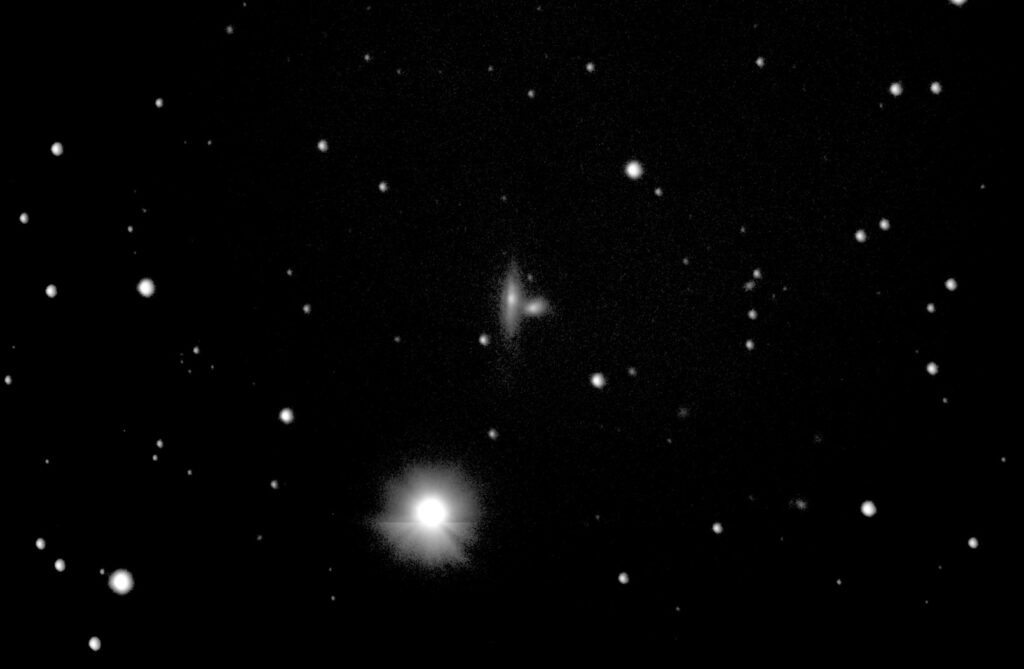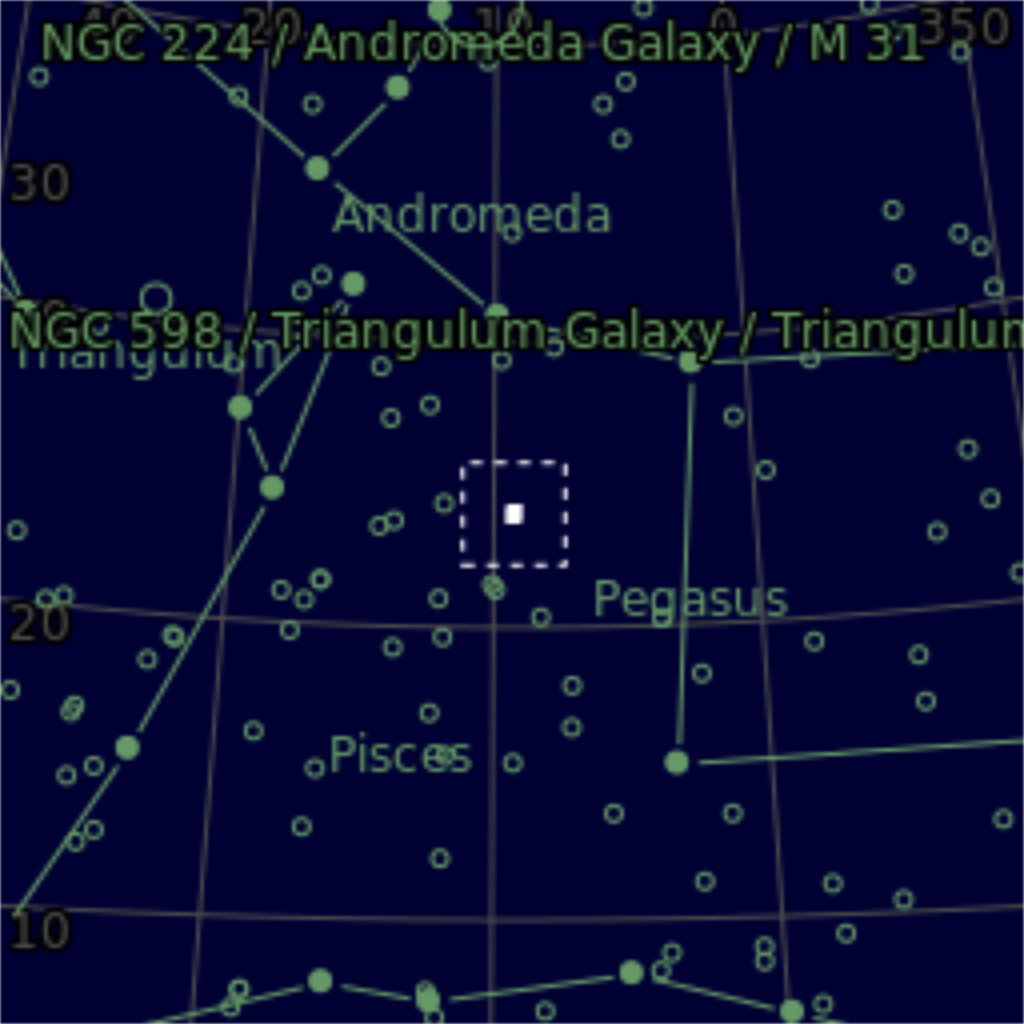| Designation(s) | Arp 282, NGC 169, NGC 169A, IC 1559 |
| Object Type(s) | Galaxy |
| Relevant Catalog(s) | All (Chron), Arp, IC, NGC |
| Arp Category | Galaxies with infall and attraction |
| Obs. Lat/Long | 42° 17', 073° 57' |
| Constellation | Andromeda |
| Date and Time Observed | 2024-12-12 21:42:00 |
| Instrument | EdgeHD 8" w/f7 reducer-1,422mm FL |
| Camera | Player One Apollo-M Mini |
| Image Details | Up is 90.4 degrees E of N. Total integration time was 30m. Exposures 15s@300g, UV/IR Cut Filter. Darks subtracted, no flats. Dithered and recentered in SharpCap. No guiding. |
| Description | Considering this was captured on a 93% moonlit night, it's pretty amazing, and testament to the power of the Apollo M-mini mono camera. All of the key details, particularly the dust trail to the lower right on IC 1559 (the dwarf galaxy), are visible, which I interpret as stars left behind while the bulk of the dwarf galaxy is drawn into a merger with NGC 169. It's even more clear in an inverted rendering of my image. As usual I prepared a direct comparison with the plate published in Arp's Atlas of Peculiar Galaxy, which shows the ultimate image using 1960s technology. I couldn't resist adding a Hubble Space Telescope image I found on Wikimedia Commons, licensed under a Creative Commons 2.0 license (and anyway, as based on Hubble data, inherently public domain). This shows how much technology improved in roughly 40 years. Of course the idea that I could capture an inferior, albeit adequate, image in half an hour from my back yard is mind blowing. I would have extended the capture, but high clouds were starting to trigger brightness filtering so I shut this capture and moved to another part of the sky. |
| Catalog Links | |











